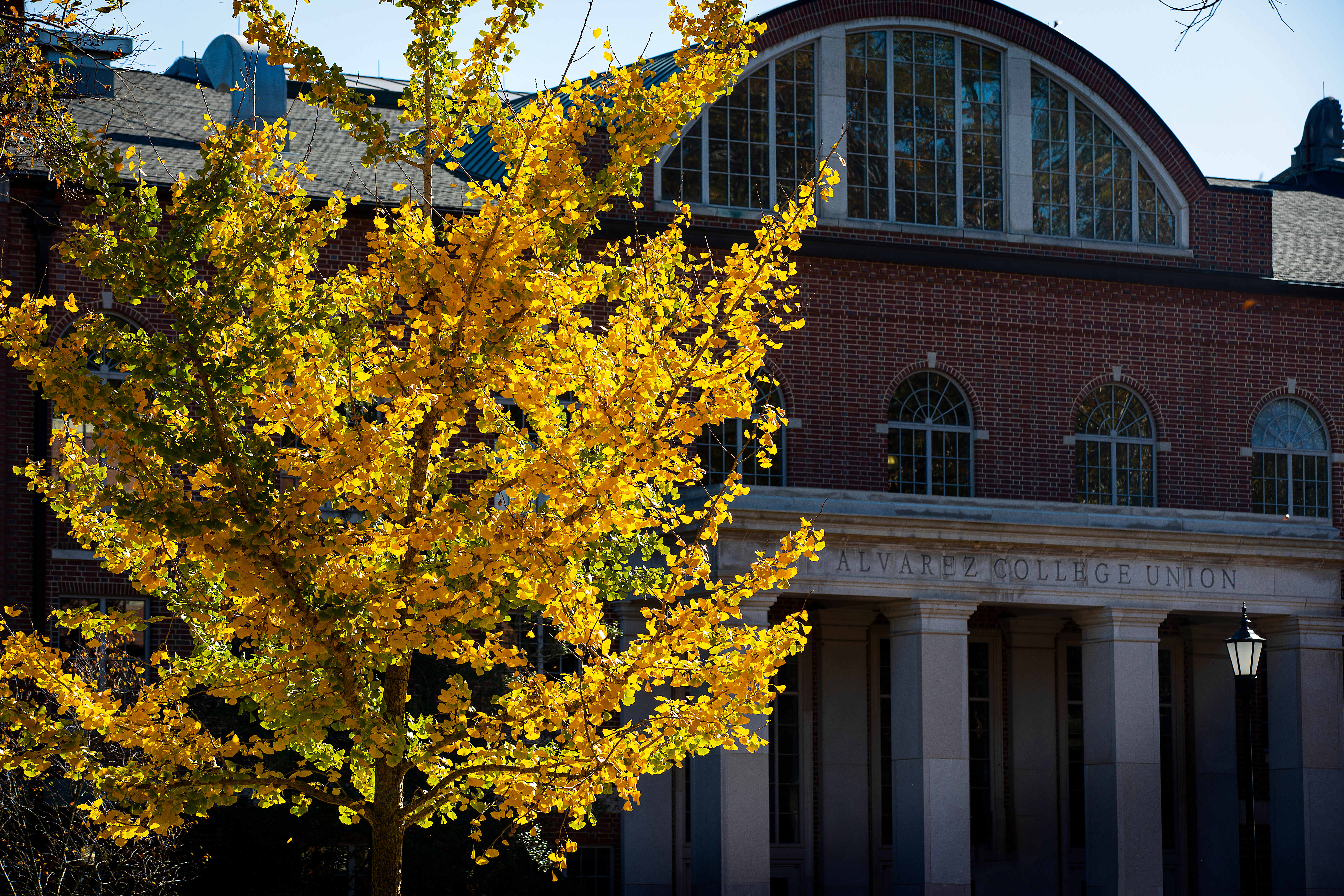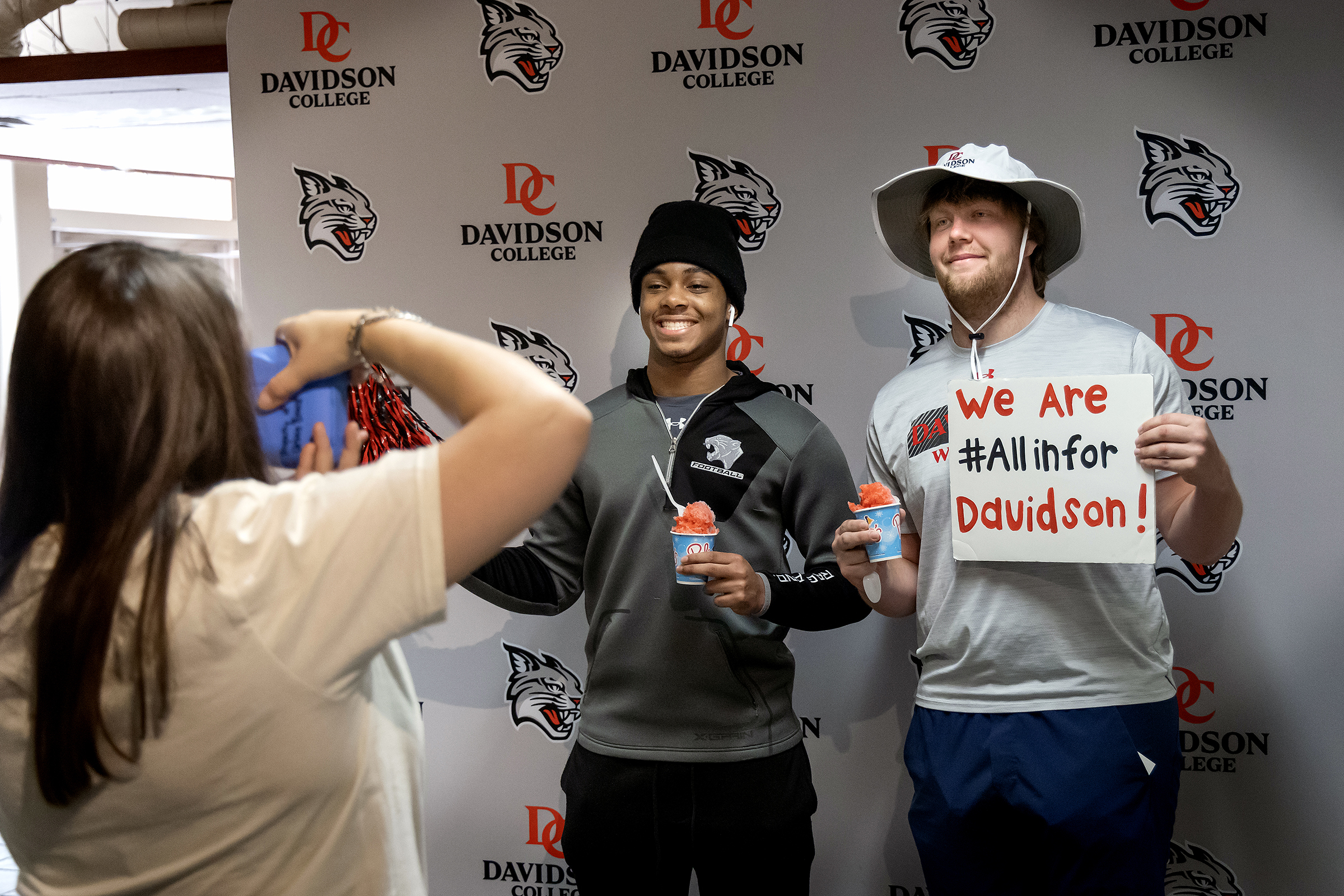Good Will, Wildcat Pumpkin Patterns and a Bit of History
October 25, 2017
A pumpkin carving party with Davidson students inspired an uplifting Facebook post from Amy Diamond: "When you are worried about the future of our world, spend an evening with five wonderful Davidson students. The world is in good hands."
The five in question were friends of Max Vierling '21, grandson of Diamond and the late Robert S. Whitton '66.
"As a student at Davidson I was drawn here in large part due to the uniquely tight-knit community. I was glad to share a piece of that with my great friends," said Vierling. "Pumpkin goo on the table, smiling faces all around, and the big fluffy white dog Luna at my feet...."
Pumpkin goo aside, Halloween (or Hallowe'en for purists) is a bit of a historical mash-up, said Assistant Professor of History and Digital Studies Jakub Kabala, a specialist in medieval history.
There was an ancient Celtic end-of-harvest side festival that served as a liminal border time for spirits from the other side, Kabala said, and this feast day likely later got layered in with All Hallows Eve, the night before the Christian celebration All Hallows/All Saints Day. The word Hallowe'en dates its Scottish roots to the mid-18th century.
One tradition that might have given rise to early "trick or treating" has travelers knocking on doors to request food in exchange for prayers for trapped souls, as they carry around a gourd lantern with a candle inside representing the soul in question.
Such historical fact and conjecture are fun, but it's important not to overthink things, Kabala noted.
"We kind of look back and try to make a system out of everything and sometimes it's tough to do that!" Kabala said.
John Syme
josyme@davidson.edu
704-894-2535



